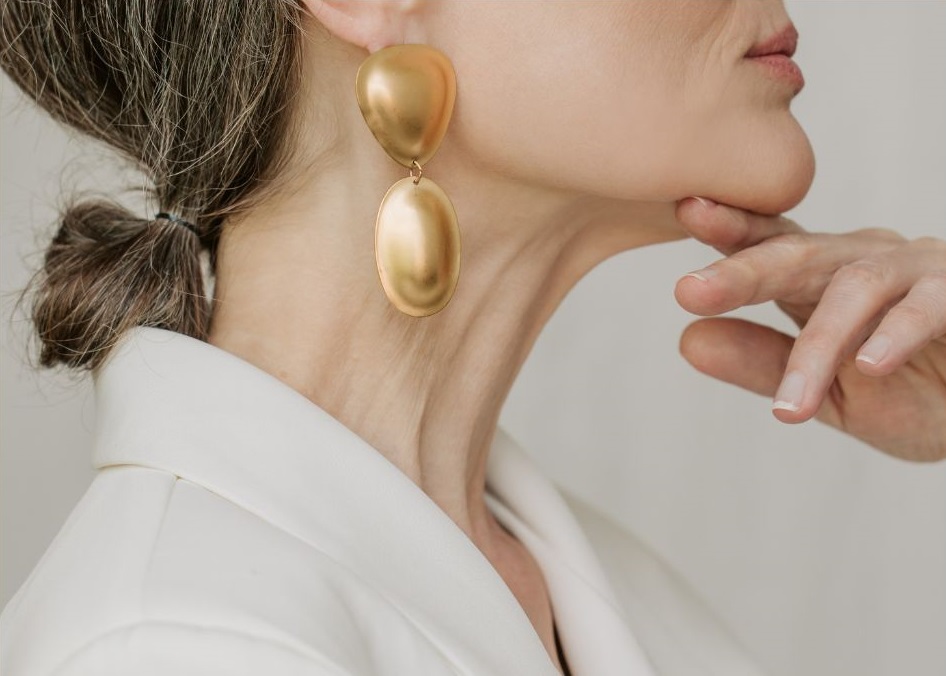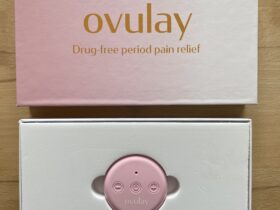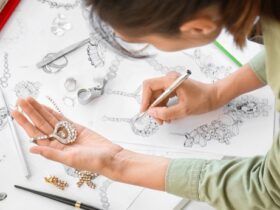Creativity, beauty, and function merged at the “Meaningful Menopause Jewellery” exhibition at KEA last week. The exhibition displayed eight pieces of digital jewellery that were not only beautiful but also comfortable and helpful. Students showcased their suggestions for how digital jewellery can address various menopause symptoms. The creators spoke enthusiastically when they explained how meaningful menopause jewellery can help women and how their specific designs can help.
The exhibited jewellery at the Copenhagen Business Academy (KEA) is the result of eight weeks of focused study and work under the guidance of Dr Vanessa Julia Carpenter and Sr. Lecturer Mette Laier Henriksen. During the “Designing for Meaningfulness” course, the students worked methodically. They dove into the subject by conducting in-depth interviews and creating questionnaires to learn about the issues and needs of menopausal women. They then prototyped solutions using a variety of materials and electronics and built the final jewellery with functional electronics for the exhibition.
Designing with constraints
“The students have created jewellery that aim to solve some of the 34 symptoms of menopause. However, they were not allowed to work with hot flashes, as devices for this already exist. It is much more difficult to create solutions for the other symptoms such as brain fog, fatigue, or anxiety and herein lies the challenge. They were also to avoid self-tracking via an app as much as possible since so many app solutions exist” explains Dr Vanessa Julia Carpenter.

That’s why Dr Carpenter recommended that the students consider avoiding pairing a smartphone app with their jewellery. Furthermore, Dr Carpenter was inspired by the work of Dr Homewood, who wrote a paper about “Inaction as a Design Decision: Reflections on Not Designing Self-Tracking Tools for Menopause” which was an inspiration for this course.
The last constraint was that the jewellery had to use haptics—things you can feel on your body—and not use lights which can often be gadget-like and distracting. Haptics offer the wearer the opportunity to connect with their body.
Design constraints are a way to focus in design and be creative within a particular framework, in this case, using the Designing for Meaningfulness methodology; designing for symptoms of menopause other than hot flashes and using haptics.
Diverse selection in function and shape
Using the design constraints, the students managed to design very diverse jewellery in terms of target, function, and shape. Some aimed to help menopausal women in general. Others were specifically aimed at women whose work lives put extra restrictions on what kind of jewellery they can wear.
Based on the results and learnings from their data, the eight groups set out to actualize their ideas. The results ranged from a tangible stress-reducing object to keep in your purse, over a Chinese medicine inspired pressure point device for migraines to a bold but beautiful headband to soothe restlessness.
If they were to go into production, many of the pieces of jewellery from the “Meaningful Menopause Jewellery” exhibition could help menopausal women. That’s why, in the coming weeks, TechTruster will write about the individual pieces of jewellery showcased at the exhibition.
See also what Techtruster has previously written about menopause tech and wearables.













Follow us on social media